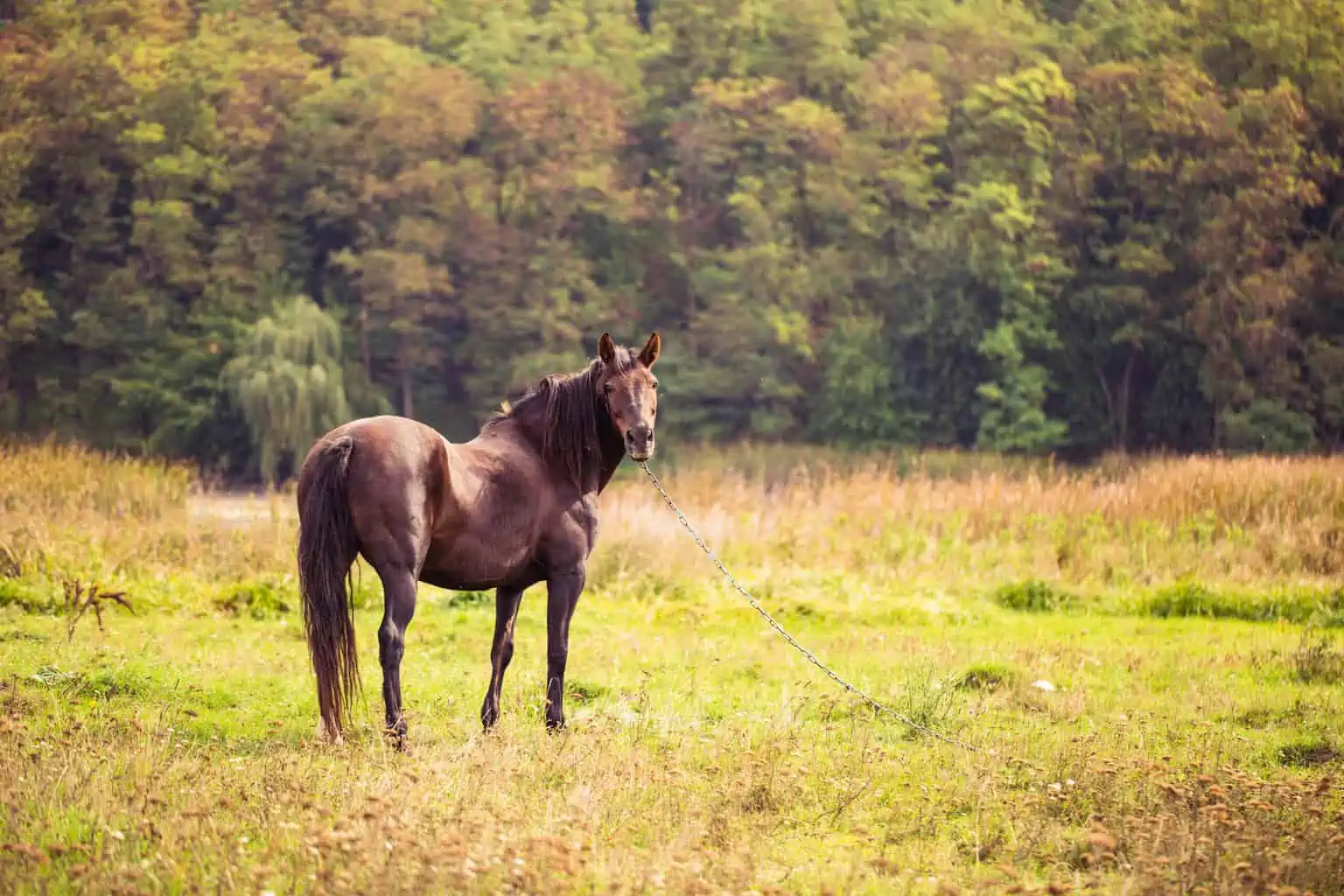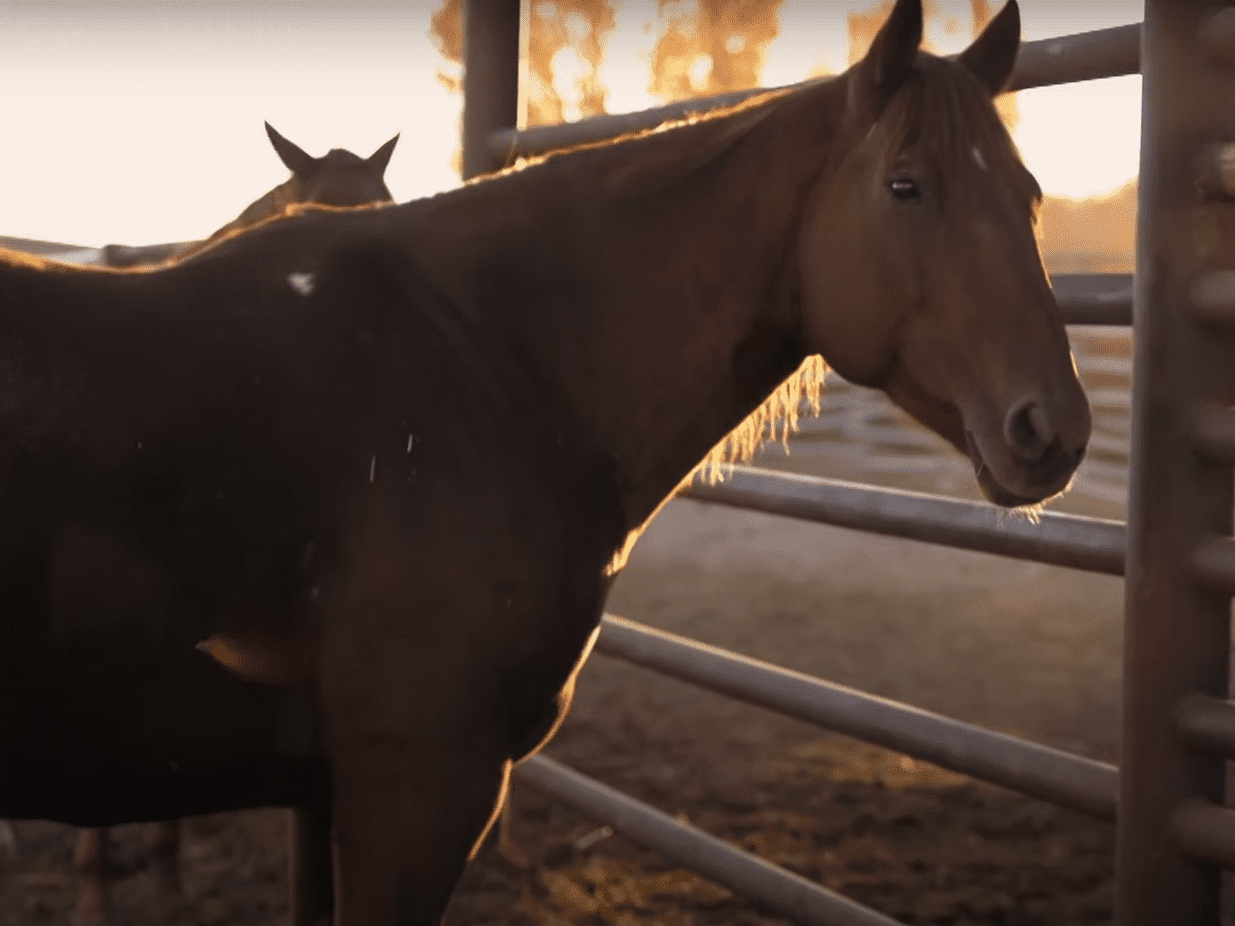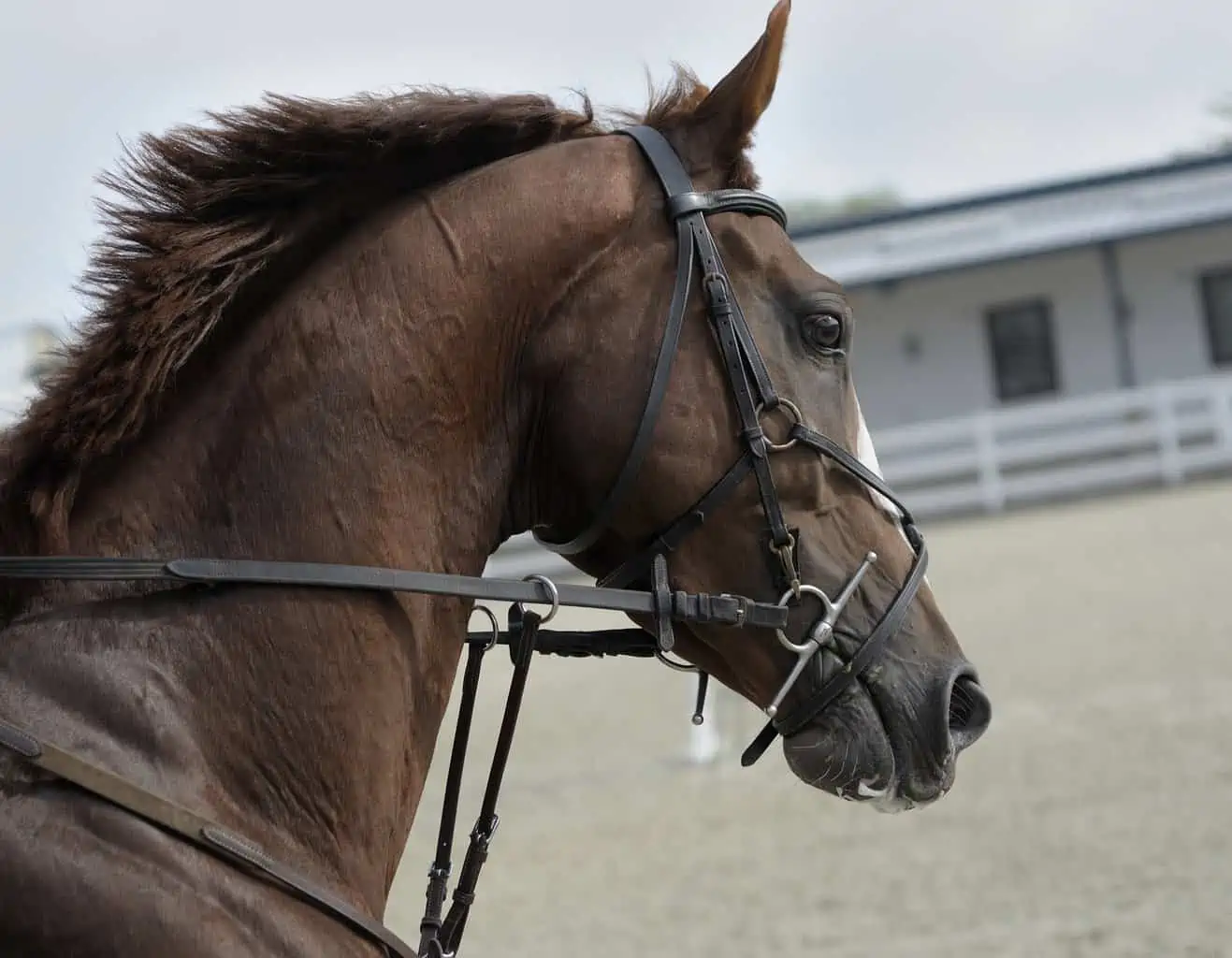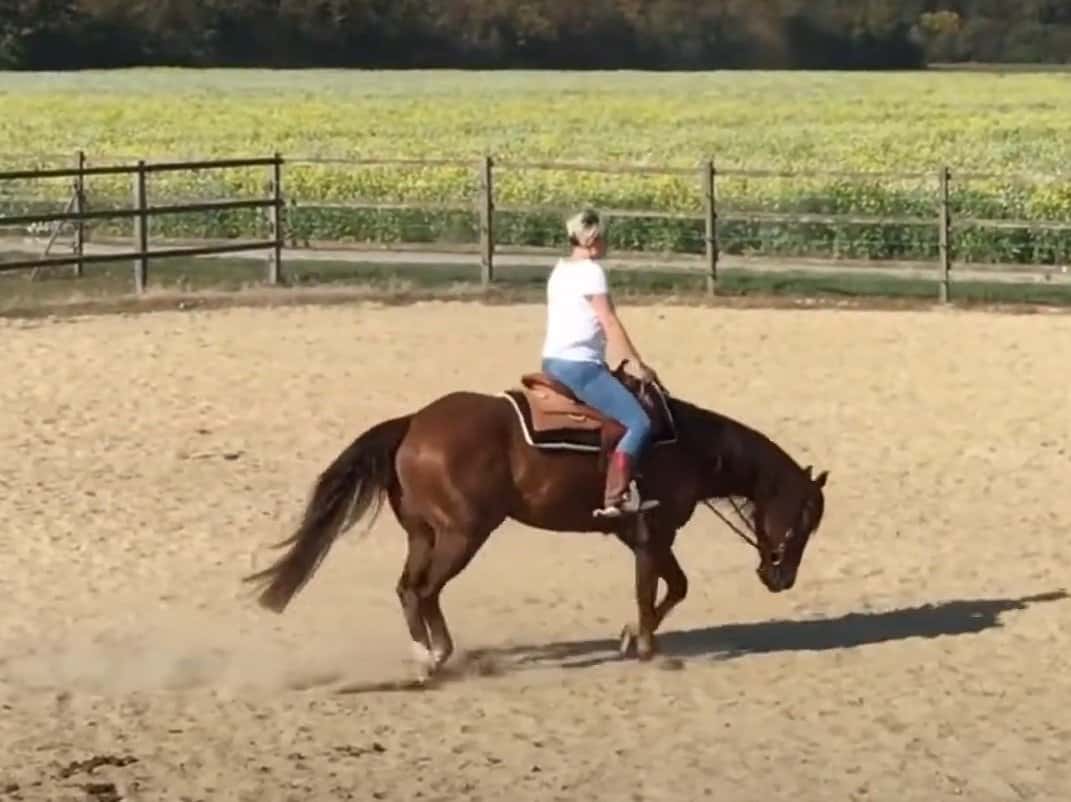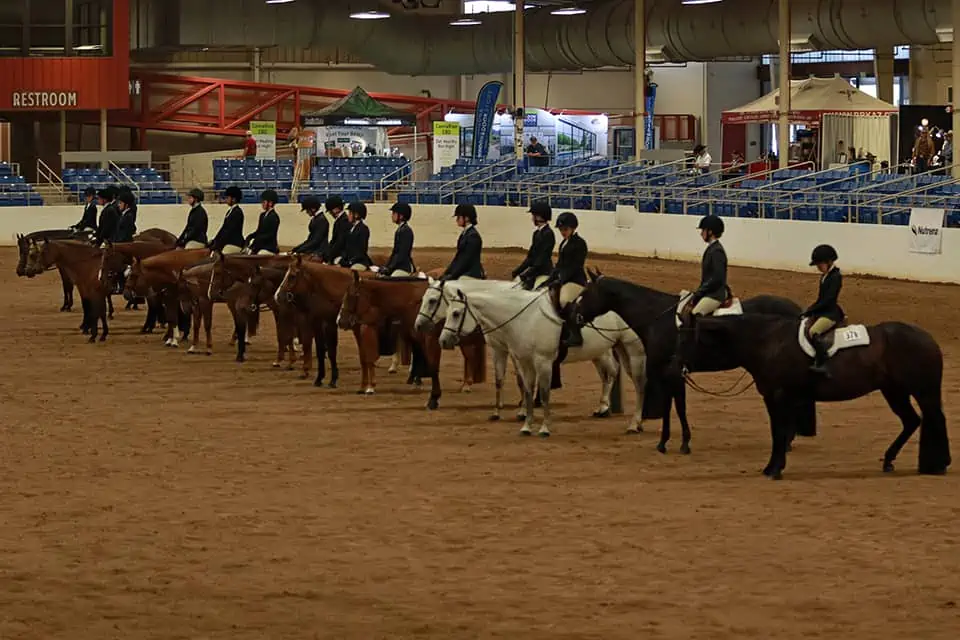- How Much Does a Bale of Hay Cost - August 15, 2023
- What is a Grade Horse: A Comprehensive Guide on Unknown Creatures of the Equestrian World - August 1, 2023
- Best Barrell Saddles - July 31, 2023
- American Quarter Horse Overview:
- The Rise of the American Quarter Horse:
- How to Identify an American Quarter Horse
- American Quarter Horse Lifespan
- Appearance and Different Varieties
- Quarter Horse Interaction and Its Training:
- How to Care for an American Quarter Horse:
- The American Quarter Horse Diet
- Breeding the American Quarter Horse
- American Quarter Horse Cost
- How to Buy an American Quarter Horse
- Examples of Famous American Quarter Horses
- FAQs
Hi equestrian lovers, have you ever wondered about the origins of an American Quarter horse? Or maybe you are curious to know everything there is about this breed. Well, you are in the right place. This American Quarter Horse guide will let you discover the famous American Quarter Horse and learn what makes it an essential part of American culture.
Horses are some of the most robust and intellectual species that have roamed the earth. They bring immense strength and stamina to the table and prove emotional comfort for many people. Although in the past, these species served mostly hard labor. But in recent years, people have also come to acknowledge their versatile and loving personalities.
Here are some traits that I believe any person interested in the American Quarter horse should know. I have also compiled some common characteristics that make the breed so unique and reliable:
Animal Family: Equidae
Common Name: Equus Caballus
Country of Origin: North America
Breed Ancestors:
- Native Spanish Horse
- Imported English Horse
Temperament: Calm and Teachable
Lifespan: 25-30 years
Height range: 56-64 inches
Weight: 900-1200 pounds
Colors: Chestnut, Sorrel, Black, Brown, Red, Gray, White, etc.
Coat Pattern: Plain solid coat, a white marking running down the head.
Body Hair: Smooth short hair with long manes.
Breeding Association: American Quarter Horse Association (AQHA).
Jobs: Cattle horses, barrel racing, emotional support animal, quarter-mile races, etc.
American Quarter Horse Overview:
American Quarter Horse, also known as Equus Caballus, is a breed known for its calm and loving temperament. Originated in North America, it is a cross between the Native Spanish and the English horses of the era. This breed has a short height ranging from 56 to 64 inches and falls in the weight range of 900-1200 pounds because of its short but dense body structure.
It comes in several colors, from which Brown, Chestnut, and Sorrel are the most common. They mostly have short plain hair with no visible markings except the flaxen spot on the forehead. They are also known for their long majestic manes. These are used as cattle horses and emotional support animals while also great for barrel and short races.
Because of its rising popularity, the American Quarter Horse Association was formed on March 15, 1940. It focused on establishing breeding standards and pedigree for the specific breed. If you own an American Quarter or are thinking of buying one, I recommend visiting AQUA’s official website.
Here you can find over six million registered records and pedigree with specific genetics related to the breed. The website also gives you access to a massive community of Quarter horse owners with years of experience. And together with the 24/7 online support and extensive forums owning a quarter horse has never been easier.
The Rise of the American Quarter Horse:
The rise of this breed can be traced back to the 16th century. The horse was primarily bred by crossing the imported English and native Spanish horses. It also possessed many traits familiar with the middle eastern horses of the era, especially the Arabian and Akhal-Teke breeds.
The need for the breed arose with the rise of cowboys and cattle farming culture in North America. The people there required a fast, reliable horse, stumbling on the Quarter breed. They were thoroughly impressed by its speed and agility.
With this, the popularity of the Quarter horse grew, and it became one of the most famous horse breeds in America to this day. In my opinion, the American Quarter greatly impacted the equestrian history of North America. And played a profuse role in revolutionizing it to today’s standards.
With the introduction of genetic mutation in the 18th century, horse breeders were trained about the implications of different breeds. The American Quarter Horse was also influenced by the combination of Percheron and Irish pony breeds, giving them their iconic short and dense stature.
How to Identify an American Quarter Horse
Allow me to say that the American Quarter Horses’ diverse history and roots can be traced back to different horse breeds. It’s ubiquitous for it to resemble many others from the Equidae family, giving rise to questions about how to identify the breed. To make that easier, here are some of the distinguishing features of the American Quarter Horse:
Body Type
The American Quarter horse is short and has a dense body structure. It is mainly identified as muscular, which can be noticed primarily through its legs. The quarter horse is made for short sprints and thus possesses massive muscular hind legs and calves, unique to the breed. Another distinguishing feature is its deep and broad chest and its overall robust build.
Coat
A common trait amongst the breed is its short hair and long mane, which is often a lighter shade of the horse’s color. This breed can be found in many colors and shades, but the most common include chestnut and sorrel. One easy way to identify the breed is by looking at its forehead as it has a small flaxen mark, sometimes even running down its nose.
Breeding Standards
Since the formation of the American Quarter Horse Association, it has provided specific breeding standards. These standards are a must-have for any American Quarter Horse to be registered and thus provide an easier way to identify one from this breed.
The first thing to help us identify it is its long and wedge-shaped head and small ears. It is also seen with wide eyes and a muscular jaw. The breeding standards also include its loose stance and always alerted head. In my view, the best way to identify this breed is while the horse is running, as it usually keeps its head down.
American Quarter Horse Lifespan
I am sure that no equestrian lover can neglect this important factor when buying a horse. In my experience, the average lifespan of an American Quarter Horse is 25 years, but with proper care can go up to 30-33 years.
Below are some of the tips that I have complied to guarantee your horse a longer lifespan and help it live a more comfortable and fulfilling life.
Exercise
As we have discussed, The American Quarter is a relatively energetic horse that loves to gaze and run around the fields. So, if you own an American Quarter horse, remember to take it out on regular walks and runs. This also helps the horse release excess gas trapped inside its stomach and avoids constipation or hard bowel movements. This dramatically increases the horse’s chances of a more comfortable lifestyle, thus influencing a longer lifespan.
Better Dental Hygiene
If you take a closer look at a Quarter Horse’s diet, you will agree with me that it mainly consists of cellulose-rich plants and vegetables. The downside of this diet is that they tend to grind away the enamel on teeth, leading to soft teeth that can break very easily.
The irregular grinding can also lead to sharp corners on the teeth, which can be very painful for the horse. Horses in this situation tend to stop eating and lose weight along the way. So, take your horse for annual dental checkups and look for any unusual eating patterns or loss in appetite.
Stimulate Gazing
If you own an American quarter horse and you tend to keep it in pens and closures, it can disturb its digestive cycles. I would suggest giving its digestive track a sense of gazing by subjecting it to short and frequent meals. As in the wild, horses mostly gaze and eat grass throughout the day; giving your frequent horse meals can stimulate its natural gazing. But it’s always better to allow natural gazing as it can lead to an overall better mood for the horse.
Looking at its Genetic Makeup
Many of you may be familiar that most horse breeds have genetic problems. I would never suggest forgetting our favorite, the American Quarter horse, in this regard. These problems are common among them due to their diverse pedigree. Try to invest in a genetic test, as it can explain your horse’s genetic structure and help you better care for it.
Socializing
I would reiterate that the American Quarter Horse is a very social and loving breed. Allowing your horse to socialize with other horses can help it relieve stress and positively affect its mental state. This goes a long way in uplifting their mode, influencing a longer lifespan.
Appearance and Different Varieties
Looking at the American Quarter horse’s long history and a comprehensive family tree, it would not be wrong to say that the quarter horse is the most diverse breed in America. It is available in almost all colors ranging from red, brown, black, grey, and white, with chestnut and sorrel being the most common. Throughout the years, specific breeding has influenced the American Quarter Horse. Making it a hybrid amongst many cultures and breeds.
Different Varieties of the Quarter Horse
As the popularity of The American Quarter Horse grew, so was its use in different ranches and shows around the world. With the increase in various jobs, the Quarter Horse was also seen adapted with every coming generation. The breed has evolved into three distinct types, each with its own set of skills and jobs. And in recent years, through genetic mutation, one more has been added to the list called the “Spotted Kind.”
The Cattle Horse
This variety of the Quarter horse is mainly used for cattle grazing. They are perfect for keeping livestock in check, due to which it tends to be a little taller than the other varieties. Unlike other Quarter horses, the Cattle horse is relatively slow and less energetic.
But despite this, they still have massive muscular legs and thighs, a distinguishing feature of the American Quarter Horse. These are often called the “Bulldog” type, a name it got due to its rather angry-looking demeanor, but this is still a Quarter Horse, and it wouldn’t mind you petting it. It’s a good boi, after all.
The Halter
This type is mainly used as show horses and is characterized by a very dense and muscular body type. These are also heavier and taller than the average Quarter horse and tend to be more famous for breeding purposes. They are also used for modeling as people tend to be mesmerized by their huge muscle mass.
Although it is pretty famous amongst Equestrian lovers, many have protested against the breed in recent years due to rising concerns about its imbalance weight to skeleton ratio.
Racing Quarter
“The Racing Quarter” is a name it gets from its impressive speed and agility. This type is used for races and different sports events around the world. It has a shorter stature than the other types but still shares the same long and muscular legs.
Due to this, it can sprint rather quickly for short distances and is perfect for Reining and Cutting. The variety also shares traits, like its slim and short body type, with its thoroughbred ancestors, including the Arabian and Irish Pony breeds.
The Spotted Quarter
Although not as famous as the other varieties, it is still considered different due to its unique coat. The Spotted horse features many spots around the body, quite contrary to the Quarter breed. This breed is mainly possible through genetic mutation, and even the American Quarter Horse Association has accepted to register the variety if both parents are registered.
Quarter Horse Interaction and Its Training:
The American Horse is a very calm and loving breed. One exciting thing about the breed is its nerves of steel. One of the things that I like the most about the Quarter horse is that it doesn’t flinch or get scared from sudden movements, making it perfect for being around pets and children. It almost resembles a royal in many ways, calm, gentle, and challenging to spook.
Keeping in mind these traits, the American Quarter Horse is straightforward to train and loves to learn new tricks. Because of its understanding personality, it doesn’t create a fuss. And unlike most horses, it doesn’t tend to get riled up around large crowds, so it is easier to control it in competition and shows.
An excellent way to train this breed is to create a bond with it. Due to its personality, it tends to form a personal connection with its owners. So, if you give it proper time and care, it will return the favor. The American Quarter Horse’s curious nature also forces itself to indulge in new tricks and jobs. So just keeping it around other trained horses will significantly increase its chances of getting trained.
In my experience, if you’re a beginner or don’t have much experience with this breed, this is a great first horse. Its short training time welcomes newcomers and can be a good option for nonskilled equestrians.
It will learn tricks without bickering, it will not start running if you accidentally pull on its mane, and it loves to lay down after a long day. If you are a dog person and always wanted a bigger dog, well, you can give the Quarter horse a thought.
How to Care for an American Quarter Horse:
When it comes to caring for an American Quarter Horse, it needs very little grooming and maintenance. Due to their robust build and overall sturdy personality, they tend to be like wild horses and can mostly take care of themself. Despite this, these are still animals, and some amount of external help is needed to keep them energetic and healthy.
Habitat
Due to the Quarter Horse’s enthusiastic personality, a somewhat larger pen is needed, so it can roam freely. Studies recommend using a 60–65-feet pen, which is better for the horse’s mental health. The pen should also include a proper enclosure so that the horse can save itself from harsh weather and rain. I would personally recommend it be made of steel, as it prevents water from dripping in.
Using a proper feeding system and water supply also goes a long way. “Parallax hay savers” are perfect for the job as it reduces hay wastage and stimulates grazing for the horse.
Grooming
When it comes to grooming, the Quarter horse does need a little attention. This breed loves typically to play outside, so it tends to get a little dirty. Cleaning its fur with a brush and constant showers goes a long way for its health and help dissipate heat in the summers.
Using a comb to take out dust and tangles is also recommended and helps keep the skin’s natural oil spread more evenly. If your specific horse features a tangled tail, you can use a detangler tool and special shampoo to keep it clean and fluffy.
I would not recommend frequent showers for the breed in the winters, as they can lead to temperature changes and are thus suspectable to high metabolic rates. So, in winters, it would be wise to use waterless shampoo and do not ever wash your Quarter horse unless it is a bright sunny day.
Genetic Diseases and Their Preventions:
Hyperkalemic Periodic Paralysis (HYPP)
This is a genetic disease, and while it is not something you can control, it is easy to spot, and reasonable care is required to prevent it from triggering. This disease directly affects the sodium channels in the horse’s body and can lead to muscle spasms and even paralysis. It is generally seen with quarter horses with a high potassium diet. Avoid feeding it Alfalfa hay or other potassium-rich food, and please try to give it small and frequent meals.
Malignant Hyperthermia
This is another genetic disease caused by one of the parents having a mutation in its gene. It can occur very suddenly and can severely cause twitching. Unfortunately, it doesn’t have a cure and can only be prevented with careful breeding.
Polysaccharide Storage Myopathy
The symptoms of this specific mutation include muscle pain, lameness, and muscle tumors. Some ways to manage the effects include careful diet control and regular exercise. But despite this, it can be tough to prevent. It can only be avoided through careful selection and avoiding breeding horses having the PSSM-1 gene. A better precautionary measure would be to take a genetic test of the horse before breeding him.
The American Quarter Horse Diet
The American Quarter Horses are known for their thick stomachs, which allow them to eat almost anything that is not poison. The standard diet for these horses includes grass, hay, and barley. Due to their active and playful lifestyle, it tends to eat frequent meals. And its diet should be a balanced mix of carbohydrates, proteins, and fats.
An active Quarter Horse can eat up to 8-10 pounds of food and drink 8-12 gallons of water throughout the day. It’s also true unlike the Haflinger, the American Quarter Horse doesn’t have the diabetic gene. So it is okay to let it graze on fresh grass without a grazing guard.
Due to its history of chronic and genetic diseases, it would be wise to go through them. The most common issue includes muscle spasms and paralysis, which can be prevented by using low potassium in their diets. Try to give them treats like apples, carrots, and oats in minute amounts, as large doses can also lead to severe health problems.
Your American Quarter may also lose weight due to a lack of nutrition despite all this. In my experience, this happens typically due to inadequate dental hygiene or other stomach-related factors. The most common treatment in this regard is keeping your horse on vitamins and supplements.
Breeding the American Quarter Horse
The American Quarter Horse comes from the native Spanish and the imported English horse of the 16th century. It shares many traits with both breeds, like its smooth and robust build from the Spanish breed. At the same time, its temperament and demeanor can be easily spotted in the English horses of the era.
I have to say, I always endorsed the horse associations. They not only provide you with the record of horses, but they also set down certain breeding rules that are to be followed if a person wants to get their horse registered with them. As stated above, the organization, based in the US, dealing with the American Quarter horse is called AQHA. I would recommend you go through their reports before you breed your animal.
Nevertheless, if you plan to breed this American icon for yourself, you should always buy a stallion, as they are easier to handle. Also, what’s wrong in making a little money? Mare owners will be more than willing to pay for your stallion’s time.
American Quarter Horse Cost
If you’re in the market for this specific breed and want to buy one for your own stable, it can set you back anywhere from $3,500 to $8,000. This price can also drastically change depending on whether you want a stallion or a mare. As stallions tend to be more expensive compared to their female counterparts.
The price of the horse depends on its age and location and can also rely on the level of training you want. A fully-trained Quarter Horse costs upwards of $10,000.
How to Buy an American Quarter Horse
The American Quarter Horse is a pretty famous breed in the States. Due to this, many traditional breeders still deal in it. You can also try your luck with adoption centers. Another way to buy the horse is through online marketplaces like equinenow and myhorseforsale. Also, don’t forget to check out the weekly QStallion by the American Quarter Horse Association. Here you can find your desired horse, together with its proper registration and pedigree.
Before buying the horse, my suggestion would be to invest in pre-purchase exams. These tests can help you understand its genetic makeup and any problems it may face down the line.
Examples of Famous American Quarter Horses
Since the breed’s rise, there have been many examples of famous Quarter Horses. Which were successful enough to be remembered to date. Following are some of these horses and their incredible accomplishments:
- Easy Jet: Born in 1967, Easy Jet the name says it all. It was a racing quarter and known for its fantastic speed and agility. It won 22 out of 26 races and even went on to win the racing horse championship in 1969.
- Poco Bueno: Another stallion included in the American Quarter Horse Hall of Fame. He was one of the most influential sires of his time and was famous for his successful cutting career. Poco Bueno’s name meant “pretty good,” a pretty average comment for such a masterpiece.
- Wimpy: Don’t go for its name, as it became a peak specimen of its time. He possesses the honor of producing many sires that went on to win the AQUA championship. And is also famous for being the first stallion to be registered in the AQUA official records.
FAQs
Answer: In the 17th century, the American Quarter horse was famous for its speed and sprinting ability over a quarter-mile. And as silly as it may sound, this was the only reason it is called the Quarter horse.
Answer: Although it depends on many factors, the American Quarter Horse is suitable for beginners in most cases. Due to its calm and loving nature, it doesn’t make a lot of fuss. It can be easily handled by an aspiring or a non-professional rider.
Answer: Yes, due to its collected attitude, it is primarily fine around kids and small animals. It possesses nerves of steel and doesn’t get startled that easily with sudden movements. And tends to be gentle with small animals and would never hurt them intentionally.



